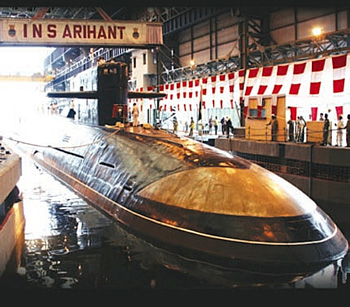INDIAN ARMED FORCES CHIEFS ON OUR RELENTLESS AND FOCUSED PUBLISHING EFFORTS

The insightful articles, inspiring narrations and analytical perspectives presented by the Editorial Team, establish an alluring connect with the reader. My compliments and best wishes to SP Guide Publications.

"Over the past 60 years, the growth of SP Guide Publications has mirrored the rising stature of Indian Navy. Its well-researched and informative magazines on Defence and Aerospace sector have served to shape an educated opinion of our military personnel, policy makers and the public alike. I wish SP's Publication team continued success, fair winds and following seas in all future endeavour!"

Since, its inception in 1964, SP Guide Publications has consistently demonstrated commitment to high-quality journalism in the aerospace and defence sectors, earning a well-deserved reputation as Asia's largest media house in this domain. I wish SP Guide Publications continued success in its pursuit of excellence.
- Appointments Committee of Cabinet approves one-month extension in service of Chief of the Army Staff
- Admiral Dinesh K. Tripathi assumes Command of the Indian Navy as 26th Chief of the Naval Staff
- Prime Minister witnesses 'Bharat Shakti' – a Tri-Services Firing and Manoeuvre Exercise in Pokhran, Rajasthan
- Interim Defence Budget 2024-25 — An Analysis
- Union Defence budget 2024
- Prime Minister Modi Commemorates Indian Navy Day in a Grand Ceremony
Nuclear reactor on INS Arihant goes critical

India recently activated the atomic reactor onboard the indigenous nuclear submarine INS Arihant paving way for its operational deployment by the Indian Navy soon, thus completing the capability on land, air and sea.
According to reports, all systems of the indigenously made nuclear reactor are on “go” and the submarine will soon be launched to sea on the Eastern coast. In May, the then Defence Research and Development Organisation (DRDO) Chief V.K. Saraswat had indicated that the sea trials of Arihant would be held soon.
Nuclear triad is the ability to fire nuclear-tipped missiles from land, air and sea. After the nuclear reactor is activated, the agencies concerned can work towards readying the warship for operational deployments soon.
The DRDO has also readied a medium-range nuclear missile BO-5 for deployment on the Arihant and its last developmental trial was held on January 27 off the coast of Vishakhapatnam. So far, the US, Russia, France, China, and the UK have the capability to launch a submarine-based ballistic missile.
Though this comes as good news for India’s defence capabilities, there is some concern over the overall strength of India’s submarine fleet. India has 14 conventional submarines that run on either battery or diesel and are aging and outdated. Each of them will have completed the standard life-span of 25 years by 2017. The nuclear submarine will help India achieve the capability of going into high seas without the need to surface the vessel for long durations.
The Prime Minister Dr Manmohan Singh said “I am delighted to learn that the nuclear propulsion reactor onboard INS Arihant, India’s first indigenous nuclear powered submarine, has now achieved criticality. I extend my congratulations to all those associated with this important milestone, particularly the Department of Atomic Energy, the Indian Navy and the Defence Research and Development Organisation.
“Today’s development represents a giant stride in the progress of our indigenous technological capabilities. It is testimony to the ability of our scientists, technologists and defence personnel to work together for mastering complex technologies in the service of our nation’s security. I look forward to the early commissioning of the INS Arihant.”





